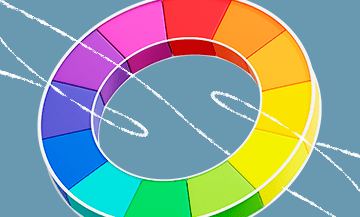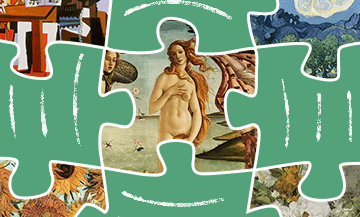How to organize your first art exhibition if you are a beginner artist? Almost every creator sooner or later begins to dream about their own exhibition where they can share their art with the world.
An exhibition is an exciting adventure, but beyond the creative joys, you will definitely be interested in more professional aspects — from paperwork to material concerns. In this article, I will explain how to get your art exhibition and what you will need for it.
Search for exhibitions to participate in
Let’s start with the first step — finding suitable exhibitions to apply for. Initially, you should check specialized websites that list artist exhibitions. There, you can find information about solo exhibitions of contemporary artists, events for young artists, special exhibitions for those just starting their creative journey, as well as other events geared towards beginners.
It’s also useful to pay attention to social media and professional artist communities. Additionally, explore exhibitions in major cities: Kyiv, Kharkiv, Odesa, Vinnytsia. Assess the variety of opportunities and choose the best exhibitions for yourself. Don’t forget to review the requirements and conditions for participation.
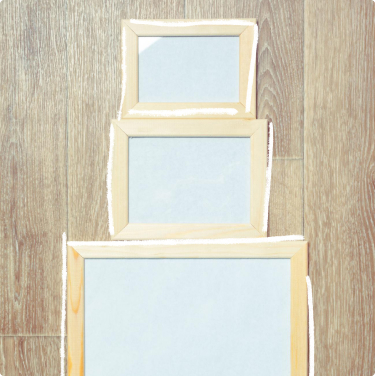

11 tips for artists who want to get into an exhibition
- Uniqueness in creativity: strive to create works that set you apart from other artists. Originality is key to attracting the attention of exhibition curators to your art.
- Emotional connection with the audience: explore themes that evoke emotions in people. In art, these are often themes of experiences and feelings. It is important to observe what in the subjects of paintings captivates viewers and touches their souls. You might want to participate in a themed exhibition dedicated to a specific topic.
- Active participation in the community: be part of the artistic community. Attend exhibitions, participate in events, and interact with peers. This way, you’ll gain the necessary information about potential art events, make valuable connections, and submit your application for exhibitions.
Or find allies and create your own exhibition in a public space, such as the same gallery.
- Creating a cohesive collection: develop a series of works or a collection of paintings that tell a unified story. Curators often look for artists who present not just individual pieces, but a comprehensive and creative view of art.
- Active online promotion: use social media, blogs, and web platforms to promote your work. Your audience could be anywhere, and your art might attract attention even before you reach an exhibition.
- Portfolio preparation: prepare a professional portfolio with high-quality photos of your works before sending them to curators.
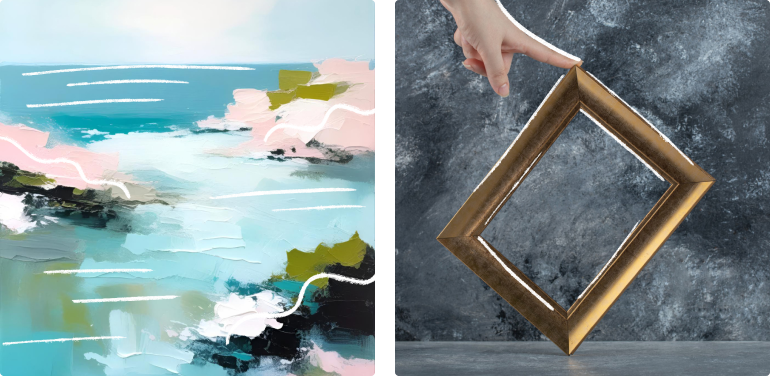
- Participation in contests and open calls: constantly keep an eye out for opportunities to participate in new contests and open calls. Attract attention in any way you can.
- Professional approach to applications: when applying for an exhibition, be professional. Follow all requirements and deadlines. Demonstrate a serious approach to your art.
- Experience in small galleries and local events: start by participating in exhibitions in local galleries and art events. Begin with small steps; let this be the start of your artistic career.
- Also, in every city, there is usually a municipal institution, such as an exhibition hall of the local artist union. Contact them and inquire about free opportunities for emerging artists. It’s an ideal place for your first exhibition.
- Feedback and reflection: be open to feedback and continuously develop. The ability to learn and adapt will help you become a more successful and sought-after artist, and interesting exhibitions in your city will become more accessible.
- Don’t be afraid to network: make new connections in the art world. Interacting with curators, other artists, and collectors will open many doors for you.
Post an announcement online with information about the date and location of the exhibition, and invite your friends, acquaintances, and art enthusiasts to join you.
At the exhibition, be proactive: interact with other artists and visitors, share your creative experiences and impressions.
Local city exhibitions
Art, as a mirror of society, is embodied in the work of artists whose works reflect culture, history and the spirit of the times.
In this context, local city exhibitions become an integral part of the evolution of the creative process. But why does an artist need these particular platforms?

- Professional review and critique: participating in city exhibitions is a great opportunity to receive feedback from professional artists, curators, and critics. This critique not only fosters the development of creative potential but also helps the artist see their work from a new perspective, identify strengths, and work on improving weaknesses. Want an honest opinion about yourself? You need to participate in a city exhibition!
- Reputation building: an exhibition serves as a kind of business card for the artist, allowing them to stand out in the creative community, attract the attention of peers, as well as potential clients and buyers.
- Working on your own style: city exhibitions offer artists the opportunity to experiment with different styles and techniques, developing their own unique signature. This process is important for both self-development and for keeping the artist interesting and relevant in the eyes of viewers.
- Opportunity for sales and networking: local exhibitions are not only a platform for showcasing but also for selling creative works. It’s a great way for an artist to find fans of their work and establish valuable contacts with peers, galleries, and potential buyers of their paintings.
- Inspiration for new creative projects: seeing your work in the context of a larger exhibition can inspire new ideas for future creative projects. Encounters with other individuals and the variety of styles presented at the exhibition can become a source of more grandiose work.
How to take part in the city exhibition?
Art, as a mirror of society, is embodied in the work of artists whose works reflect culture, history and the spirit of the times.
In this context, local city exhibitions become an integral part of the evolution of the creative process. But why does an artist need these particular platforms?


- Select the theme of the exhibition: decide which works are best suited for the specific theme of the city exhibition. This could be a theme related to local art, the city’s history, or a current social issue.
- Research local galleries and cultural centers: find out which organizations are responsible for city exhibitions. For example, these could be local galleries, cultural centers, or organizations supporting the arts. Contact them and clarify the application process.
- Prepare your portfolio: prepare high-quality photographs of your works and create a concise portfolio. Include a variety of pieces to showcase the diversity of your creativity.
- Submit your application: follow the instructions for applying to the exhibition.
International exhibitions
An international exhibition is a wonderful opportunity for an artist to broaden their horizons and gain new experiences. But I’ll be honest: getting into one is harder than a local city exhibition. For such an event, you need both experience and reputation. In general, this path is not for beginners.
Still, an international exhibition is a find. What are the benefits of participating in an exhibition abroad?
- Exploring new trends and directions in art: exhibitions allow you to see works by artists from all over the world and familiarize yourself with various styles and techniques. This helps the artist stay up-to-date with the latest trends and develop their professional skills.
- Even more connections: you can meet other artists and gallery owners. New opportunities for collaboration and experience exchange await you.
- Selling works and attracting new clients: here, artists can present their works to a wide audience and attract potential buyers. The commercial aspect is an important part of all international exhibitions.
- Promoting your name and works: participating in international exhibitions provides the artist with an opportunity to increase their visibility and recognition in the art world. Recognition and demand on the international art scene can make a career more successful.

In case of collaboration with a gallery from another country, they will assist you in preparing the necessary documentation and provide information on the requirements.
If you have any questions, be sure to consult with your lawyer to protect yourself from any issues related to the legislation of the other country.
Online exhibitions
An online exhibition is a digital space where artists can showcase their works to a wide audience via the Internet.
It is a virtual event where artworks are displayed using digital technologies—on websites, galleries, social media, and specialized art platforms.
The online space allows artists to present their paintings to people from all over the world. This significantly expands the audience and increases the chances of attracting attention to their work.
Participating in physical exhibitions can require substantial costs for transportation and storage of artworks, while online exhibitions are simpler: all paintings are in the digital space, which saves money and resources.
A huge advantage of this format is that art lovers can purchase paintings directly online, without leaving their homes.
Often, online exhibitions are a way for beginners to make a global statement when they lack the opportunity to participate in offline exhibitions. If you are considering where to start your creative journey, an online exhibition is an excellent option.

Independent organization of an exhibition of paintings
If you can’t get into an exhibition, you can always organize your own.
Firstly, organizing your own exhibition gives the artist the opportunity to control every aspect of the process, from selecting the venue, renting or creating the exhibition space, to organizing press conferences and advertising the event. The artist will experience complete freedom in expressing their creative idea and presenting it to the public as they see fit.
Secondly, independently organizing an exhibition allows the artist to set their own prices for their works and fully control their financial side. They can choose what percentage of the sales to give to the gallery owner and what portion of the income to keep for themselves. This is especially important for emerging artists who find it challenging to break into well-known galleries and the art market.
Finally, organizing your own art exhibition helps the artist develop skills in organizing and promoting their art. You can gain practical experience in working with media, writing press releases and promotional materials, as well as managing time and resources to successfully organize the exhibition.
Can’t join a popular exhibition in your city? Lead your own! Create an exhibition that art enthusiasts will remember for a long time.
How to prepare works for an exhibition?
 Selection of Works: Determine which paintings you want to present at your exhibition. Choose works that best reflect your style and theme.
Selection of Works: Determine which paintings you want to present at your exhibition. Choose works that best reflect your style and theme.
 Condition Assessment: Carefully examine each painting. Look for any damage, scratches, or wear. Decide if any restoration work is needed.
Condition Assessment: Carefully examine each painting. Look for any damage, scratches, or wear. Decide if any restoration work is needed.
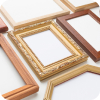 Frames and Stretcher Bars: Choose appropriate frames or stretcher bars for each painting. They should complement the work and create a harmonious look. Make sure they are in good condition.
Frames and Stretcher Bars: Choose appropriate frames or stretcher bars for each painting. They should complement the work and create a harmonious look. Make sure they are in good condition.
 Presentation: Decide if additional presentation elements, such as mats or labels with information about the painting, are needed. This will help viewers better understand your creation.
Presentation: Decide if additional presentation elements, such as mats or labels with information about the painting, are needed. This will help viewers better understand your creation.
 Securing and Protecting: Secure all elements on the paintings that might peel off during transport or the exhibition. Consider applying a protective layer to prevent damage.
Securing and Protecting: Secure all elements on the paintings that might peel off during transport or the exhibition. Consider applying a protective layer to prevent damage.

Documentation: Create documentation for each painting, including title, dimensions, technique, and your personal description of the work. This information will be useful for viewers and potential buyers.
 Photographs: Take high-quality photographs of each painting. These images can be used to create a catalog, for advertising, and for online sales.
Photographs: Take high-quality photographs of each painting. These images can be used to create a catalog, for advertising, and for online sales.
 Transportation: Develop a plan for transporting the paintings to the exhibition venue. Ensure their safety and protection from potential damage.
Transportation: Develop a plan for transporting the paintings to the exhibition venue. Ensure their safety and protection from potential damage.
 Packing: Pack the paintings in special protective materials. Make sure the packing is sturdy and suitable for transportation.
Packing: Pack the paintings in special protective materials. Make sure the packing is sturdy and suitable for transportation.
 Catalog Preparation: If you plan to distribute a catalog of the exhibition, prepare information about each painting, including images, descriptions, and prices.
Catalog Preparation: If you plan to distribute a catalog of the exhibition, prepare information about each painting, including images, descriptions, and prices.
Of course, organizing your own exhibition is an exciting but simultaneously complex event; nevertheless, it is a new stage in your professional growth.
Share your plans with friends, discuss your ideas with art experts, and send out your portfolio. In short, open the doors and showcase your creativity to the world.
May your first exhibition be the starting point of a wonderful creative journey. I wish you success!
Conclusion
The path to an exhibition begins with the first brushstroke, but art moves forward not only through the strength of the hand but also through the passion of the heart. All great artists once stood before a canvas, just as we do today, unsure of how to gain fame and give their paintings recognition.
So, take up your brush, reveal your inner world on the canvas, and let your art shine at the exhibition. Remember, your creativity is the key not just to getting into an exhibition, but to staying in the hearts of those who see you. Good luck!
Question-answer
An exhibition gives an artist the opportunity to present their works to the public and share their ideas, emotions, and impressions. Through an exhibition, you can promote your art and form new connections within the artistic community.
Many art exhibitions are also about sales. An exhibition becomes a good way for an artist to earn income. If an artist needs recognition and support, this is also a goal of the exhibition.
Ultimately, exhibitions help shape and strengthen an artist’s personal brand. You can become a popular master or be associated with a specific style or direction in art.
Check for local art galleries or art societies in your area. Many of them organize exhibitions for artists.
If you are a beginner, don’t forget to use social media. Instagram, Pinterest, DeviantArt—these are great platforms to start your career.
- Theme and Concept of the Exhibition:curators evaluate how well the submitted artworks align with the main theme and concept of the exhibition.
- Artistic Quality:the assessment of the artist’s technical skill, materials used, composition, and style plays a crucial role.
- Originality and Innovation:curators value unique ideas, creative approaches, and innovative methods of artistic expression.
- Relevance and Sociocultural Context:the selection of artworks may depend on how well they reflect contemporary trends, challenges, and issues within the sociocultural context.
- Professional Experience and Reputation of the Artist:the artist’s success and experience may also influence curators’ decisions. Awards, participation in other exhibitions, and recognition strengthen the chances of artwork being included in the exhibition.
- “Dialogue” with Other Works:curators may consider how the artwork interacts with other pieces in the exhibition, creating a cohesive and engaging artistic space.
Experience in participating in exhibitions can be useful, but it is not always required. Selection criteria depend on the exhibition organizers and their goals. They may be interested in seeing past exhibitions or achievements in your portfolio.
However, if you do not yet have exhibition experience, it does not mean you cannot be selected. Instead, organizers will evaluate your skills, creativity, ideas, and potential to create engaging exhibits.
Therefore, if you are ready to present your ideas and work, do not hesitate to apply for the exhibition and showcase your potential.



